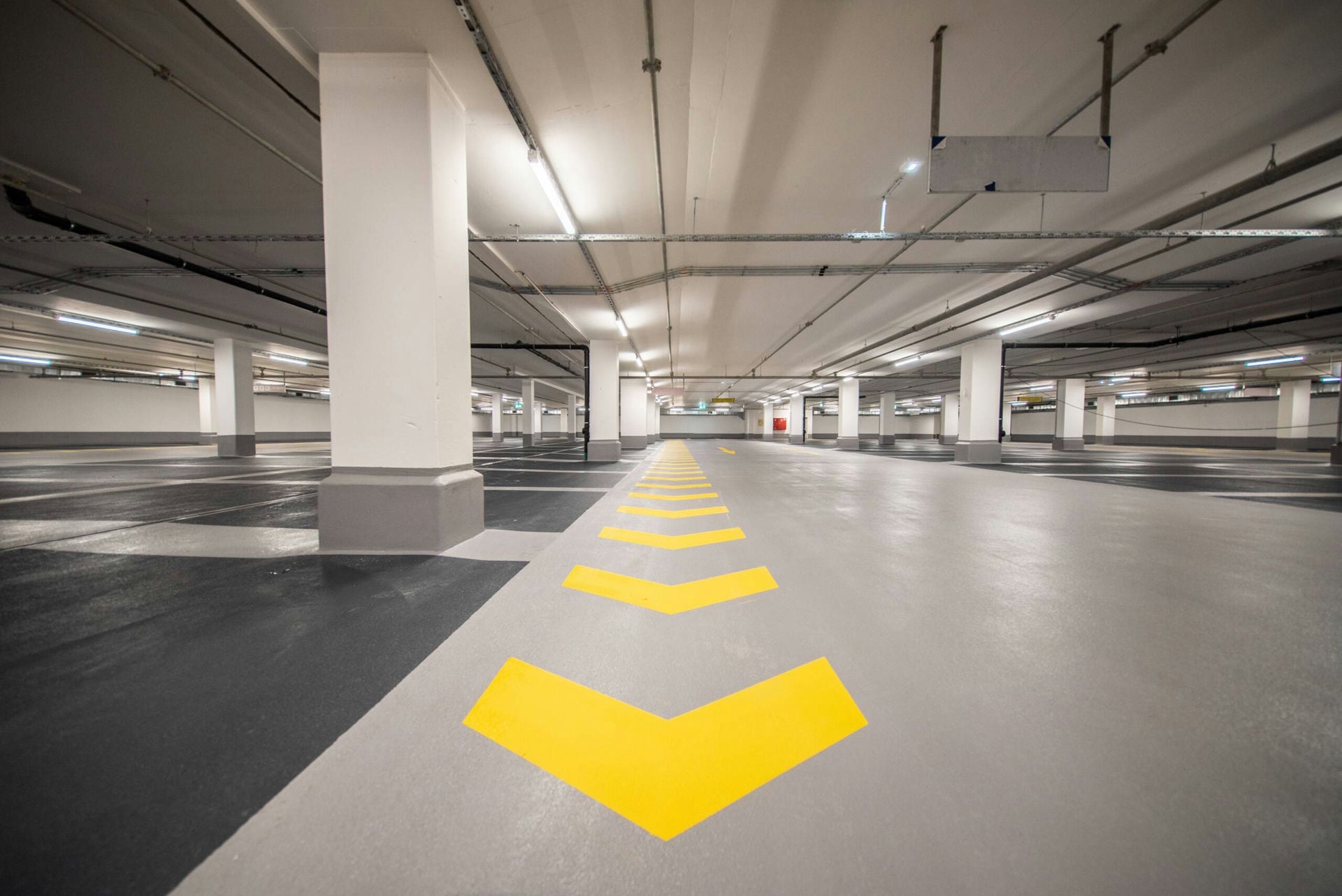
APPLICATIONS
Rigid flooring system, designed for making anti-slip coverings of traffic routes, parking areas and exit ramps. Due to its low UV resistance, it should only be used indoors. It is designed under typical vehicular traffic of cars and trucks. The system is not designed under hard wheel load (steel, polyamide, etc.).
COLORS
Available standard colors similar to RAL: 7040, 7044, 7032, 1015, 1001, 3011, 6001, 6011, 6010, 9010 – other RAL colors available on request.
SYSTEM COMPONENTS
- Meteor Primer – HYDRO variety – epoxy primer to strengthen and reduce absorption, suitable for use on wet substrates (see product technical sheet);
- Meteor Primer W – for use as a low-cost leveling coat for milled/blasted substrates and as a base coat for aggregate backfill. Silicon color;
- Meteor Stone W – as above, available in various colors;
- Flame-cured quartz aggregates. The most commonly used fractions: 0.2 – 0.8 mm and 0.4 – 0.8 mm for walkways and parking areas, and 1.0 – 1.6 mm for exit ramps;
- Meteor Color Parking – a lowviscosity color screed to close the system. Can also be used as a base layer for aggregate backfill.
SYSTEM*
- Preparation of the substrate:
The mineral substrate should be of class min. C20/25, with a peel strength of min. 1.5 MPa. During curing, the resin is not sensitive to moisture, both that from the substrate and from the air, but the surface moisture of the substrate should not be higher than 15% (dull-moist substrate, for example, surface-dried after flooding with water). Note that closing a substrate that is not seasoned with an airtight epoxy system may cause the system to detach due to the vapor pressure contained in the mass of concrete. The substrate must have horizontal insulation and be protected from capillary rise and negative water vapor pressure. The top layer must be free of lime milk, dirt and old coatings. The best surface preparation is achieved by shot blasting, grinding or milling the concrete. - Equalizing the milled or blasted surface:
Leveling is best carried out by mechanical processing, namely grinding. If this is not possible, it can be done with resins after priming. One of two products can be used to level the surface: Meteor Primer W (a cheaper solution) or Meteor Stone W screed – both solutions are technically correct. The product is applied with a steel squeegee by pulling down “on zero”. - Priming:
Standard substrates: For standard mineral substrates, use Meteor Primer clear priming resin.
Priming with a transparent primer allows you to optimally prepare the substrate before further operations, and thus achieve proper peel resistance for the entire system. A primer that is transparent makes it possible to reveal, at a very early stage of the work, problems with the substrate, such as localized dampness or areas of increased absorbency. The primer is best applied with a steel or rubber squeegee and then rolled out with a velour roller.
Poor quality substrates: For very weak substrates that you want to strengthen, saturate them with Meteor Primer using the wet-on-wet method until the substrate no longer absorbs the primer. You can also infuse the surface with glass matting, which will also significantly improve the quality of the substrate. If in doubt, we recommend performing a pull-off test after the priming operation.
Highly absorbent substrates: We prime substrates with high absorbency but good bearing capacity twice. We carry out the second priming 24 hours after the first priming. - Basic layer:
For the base layer of the system, use Meteor Primer W or Meteor Stone W screed, alternatively, Meteor Color Parking can also be used. The screed should be spread with a steel trowel with teeth such that the consumption is 0.8 kg / m² (example tool: Wolff squeegee with S3 teeth). After spreading, the screed should be backfilled with quartz sand of the appropriate fraction. The socalled full backfill should be made, i.e. about 3.5 kg of sand per m². After curing, excess sand should be swept away (the sand can be reused), the surface should be gently sanded with sandpaper (Columbus type grinder) and thoroughly vacuumed. Recommended fractions of sand are: - 0.2 – 0.8 mm or 0.4 – 0.8 mm – traffic routes and parking areas,
- 1.2 – 1.6 mm or 1.4 – 2.0 mm – exit ramps.
- Closing layer:
Spread the screed evenly on the quartz sand base with a rubber squeegee or steel trowel. The method of application depends on the degree of anti-slip and the appearance of the coating you want to achieve. The resin should then be rolled out with a velour roller in both directions. On large areas, the roller should be changed every 200 m² or so to achieve a uniform appearance. It is not allowed to add any solvents (xylene, acetone, epoxy solvents) to the top layer of the epoxy system.
*The described system is technically optimal, relatively easy to execute and avoids execution errors. However, this is not the only way of execution – each contractor’s team has its own way of working, which can be successfully applied to the parking system based on Meteor resins.
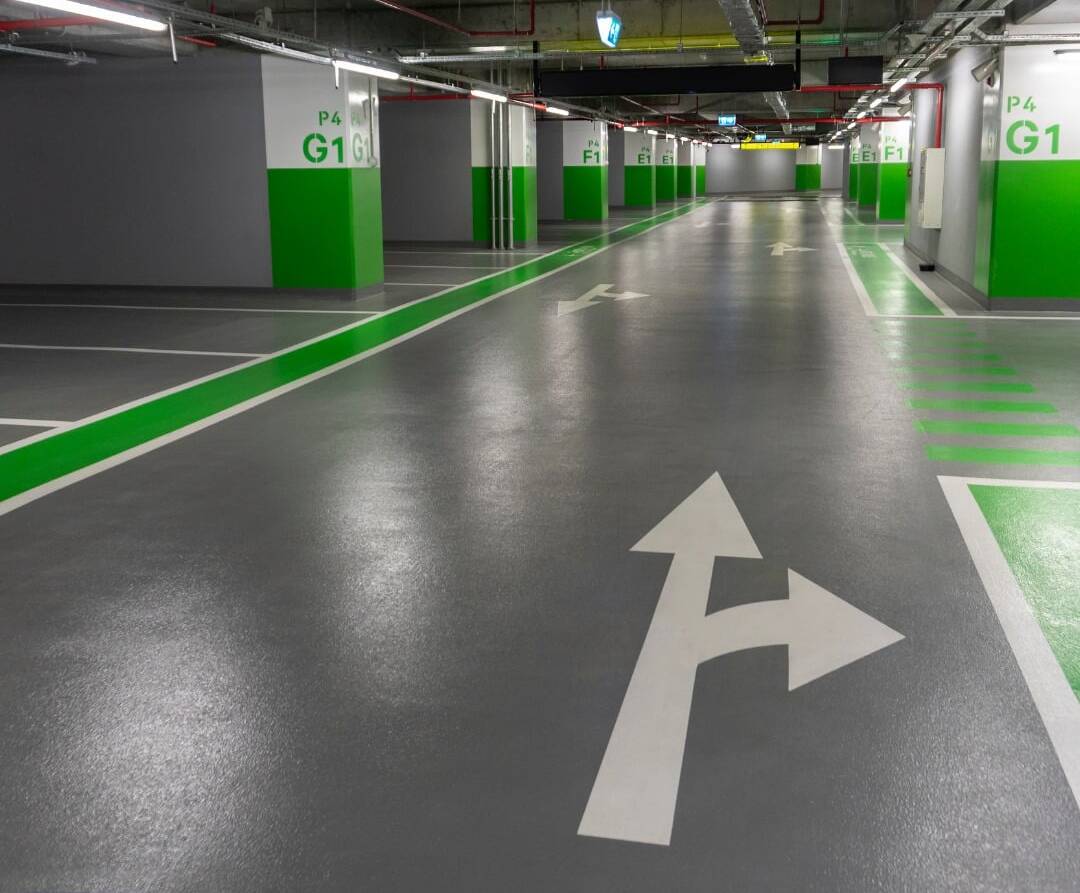
ORIENTIVE MATERIAL USE*
Substrate priming – Meteor Primer: 0.15 – 0.25 kg/m² (for ready-mixed concrete).
Base layer: Meteor Primer W / Meteor Stone W: 0.5 – 0.8 kg/m².
Quartz aggregate: 3.5 kg/m²
Closing layer: Meteor Color Parking: 0.8 kg/m² for 0.2 – 0.8 mm sand and 2 kg/m² for 1.0 – 1.6 mm sand. Consumption depends on the degree of closure of the system.
*Consumptions given are approximate and cannot be claimed. Actual consumptions depend on many factors beyond the manufacturer’s control, such as substrate absorbency, surface preparation technology, application methods, etc.
MAINTENANCE OF THE SYSTEM
Keep the surface of the parking lot clean, sweeping frequently by hand or mechanically. For cleaning, use detergents with a pH of 5.5 to 9. Do not use acid-based and chlorine-based cleaning agents. It is unacceptable to use organic solvents (acetone, xylene, nitro, gasoline) – they destroy epoxy layers at a very fast rate. Washing temperature must not exceed 60°C.
CLEANING TOOLS
Clean tools and any contaminants freshly with acetone or other epoxy solvent. If cured, the resin can only be removed mechanically.
HEALTH AND SAFETY REQUIREMENTS
Some components of flooring compounds in their uncured state are harmful to health. In particularly sensitive people, they can cause allergies. Special precautions must be taken when performing work. The rooms where floors are prepared and made must be well ventilated. Workers should use protective clothing, shoes, goggles and gloves. Detailed safety rules are given in the Safety Data Sheets of the ingredients. METEOR epoxy flooring compounds are physiologically inert to the human body after curing.

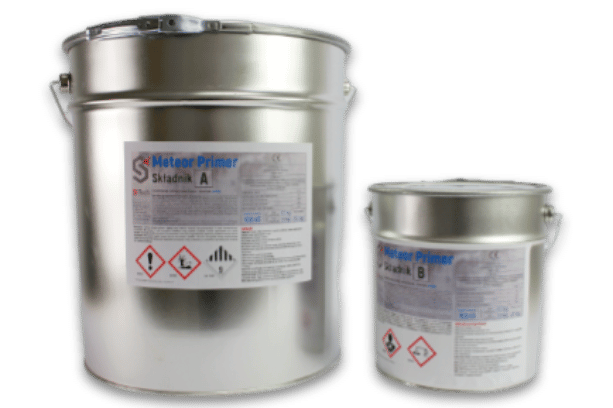 Meteor Primer - HYDRO variety - epoxy resin primer for damp substrates
Meteor Primer - HYDRO variety - epoxy resin primer for damp substrates 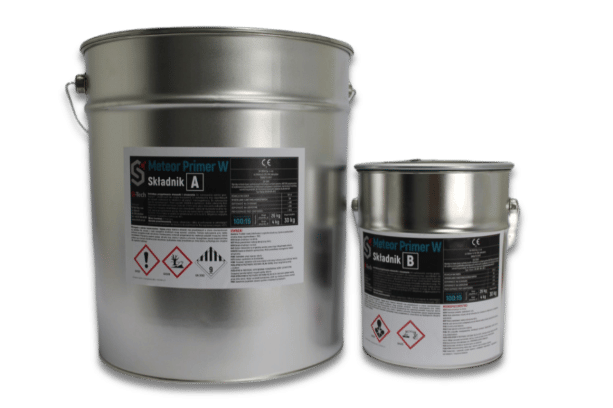 Meteor Primer W - epoxy priming resin, filled
Meteor Primer W - epoxy priming resin, filled 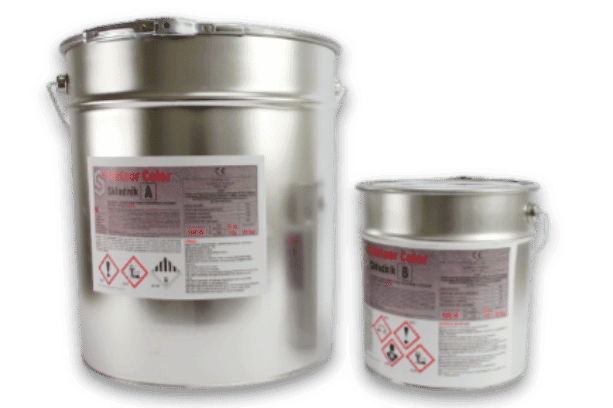 Meteor Color - PARKING version - colored epoxy resin for parking system
Meteor Color - PARKING version - colored epoxy resin for parking system 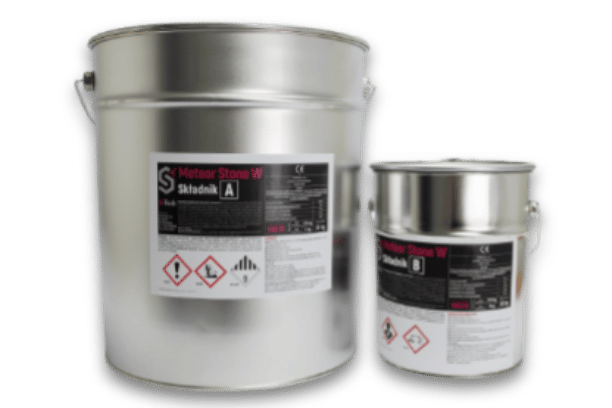 Meteor Stone W - epoxy construction resin, filled
Meteor Stone W - epoxy construction resin, filled